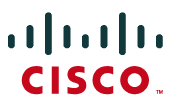 Cisco
Cisco announces major advancement in Internet networking -- the Cisco CRS-3 Carrier Routing System -- designed to serve as the foundation of the next-generation Internet and set the pace for the astonishing growth of video transmission, mobile devices and new online services through this decade and beyond.
With more than 12 times the traffic capacity of the nearest competing system, the Cisco CRS-3 is designed to transform the broadband communication and entertainment industry by accelerating the delivery of compelling new experiences for consumers, new revenue opportunities for service providers, and new ways to collaborate in the workplace.
Overview:
- The Cisco CRS-3 triples the capacity of its predecessor, the Cisco CRS-1 Carrier Routing System, with up to 322 Terabits per second, which enables the entire printed collection of the Library of Congress to be downloaded in just over one second; every man, woman and child in China to make a video call, simultaneously; and every motion picture ever created to be streamed in less than four minutes.
- The Cisco CRS-3 enables unified service delivery of Internet and cloud services with service intelligence spanning service provider Internet Protocol Next-Generation Networks and data center. The Cisco CRS-3 also provides unprecedented savings with investment protection for the nearly 5,000 Cisco CRS-1 deployed worldwide. Cisco’s cumulative investment in the Cisco CRS family is $1.6 billion, further underscoring the company’s commitment.
- AT&T, one of the world’s largest telecommunications companies, recently tested the Cisco CRS-3 in a successful completion of the world’s first field trial of 100-Gigabit backbone network technology, which took place in AT&T’s live network between New Orleans and Miami. The trial advances AT&T’s development of the next generation of backbone network technology that will support the network requirements for the growing number of advanced services offered by AT&T to consumer and business customers, both fixed and mobile.
- The Cisco CRS-3 is currently in field trials, and its pricing starts at $90,000 U.S.
Highlights and Capabilities for the Next-Generation Internet:
- Unmatched Scale: With a proven multi-chassis architecture, the Cisco CRS-3 can deliver up to 322 tbps of capacity, more than tripling the 92 tbps capacity of the Cisco CRS-1 and representing more than 12 times the capacity of any other core router in the industry.
- Unique Core and Data Center/Cloud Services Intelligence: In addition to capacity requirements, the growths of mobile and video applications are creating new multidirectional traffic patterns with the increasing emergence of the data center cloud. The new Cisco Data Center Services System provides tight linkages between the Cisco CRS-3, Cisco Nexus family and Cisco Unified Computing System to enable unified service delivery of cloud services. This intelligence also includes carrier-grade IPv6 and core IP/MPLS technologies that permit new IP NGN architectural efficiencies required to keep pace with the rapidly growing cloud services market.
Unique capabilities include:
- Network Positioning System -- provides Layers 3 to 7 application information for best path to content, improving consumer and business experiences while reducing costs.
- Cloud virtual private network for Infrastructure as a Service-enables ‘pay-as-you-go’ for compute, storage and network resources by automating Cisco CRS-3 and Cisco Nexus Inter-Data center connections for Cisco UCS.
- Unprecedented Savings: The Cisco CRS-3 offers dramatic operational expense savings and up to 60 percent savings on power consumption compared to competitive platforms. The Cisco CRS-3 also delivers significant capital expenditures savings and investment protection for existing Cisco CRS-1 customers. The new capabilities in the platform can be achieved by reusing the existing chassis, route processors, fans and power systems with the addition of new line cards and fabric. These upgrades can be performed in-service and be provided by Cisco Services to ensure a smooth transition.
- Silicon Innovation: The Cisco CRS-3 is powered by the new Cisco QuantumFlow Array Processor, which unifies the combined power of six chips to work as one, enabling unprecedented levels of service capabilities and processing power. Making this implementation even more unique is its ability to deliver capabilities with a fraction of the power required by lesser performing chipsets. The Cisco QuantumFlow Array chipset was designed to provide the new system the ability to scale with the ever increasing demands being placed on the IP NGN by the many different applications and billions of devices being used by both businesses and consumers in the Zettabyte era.